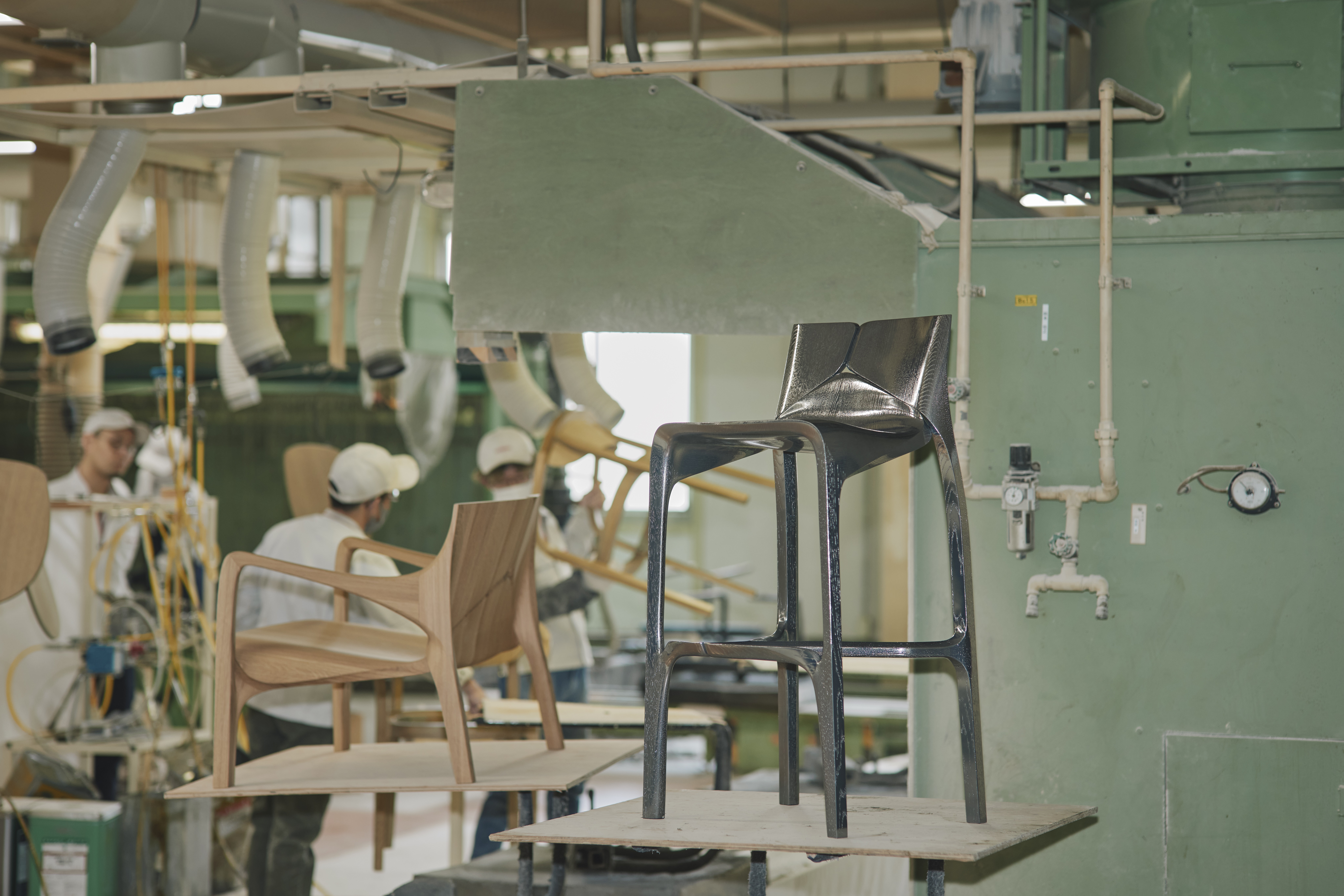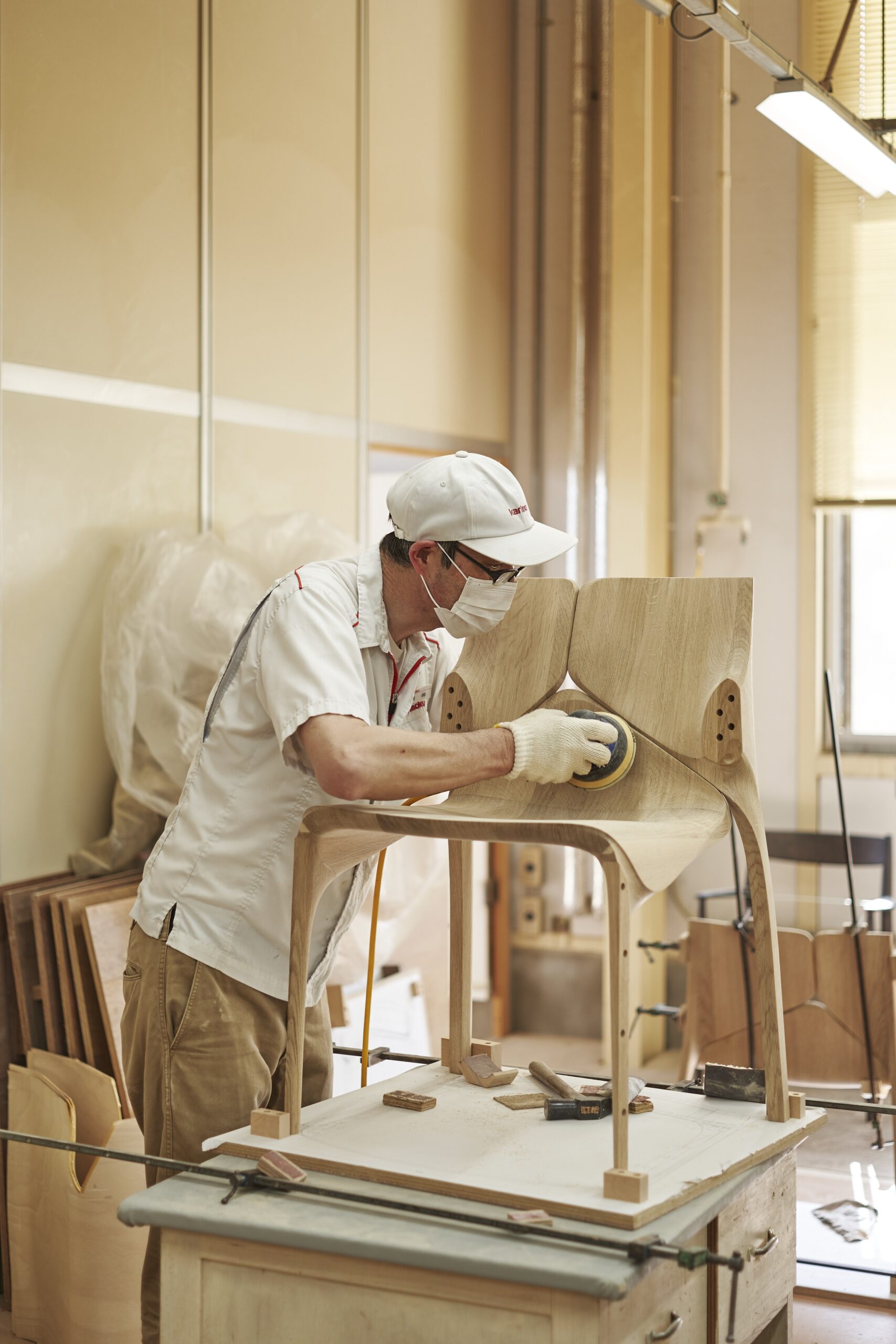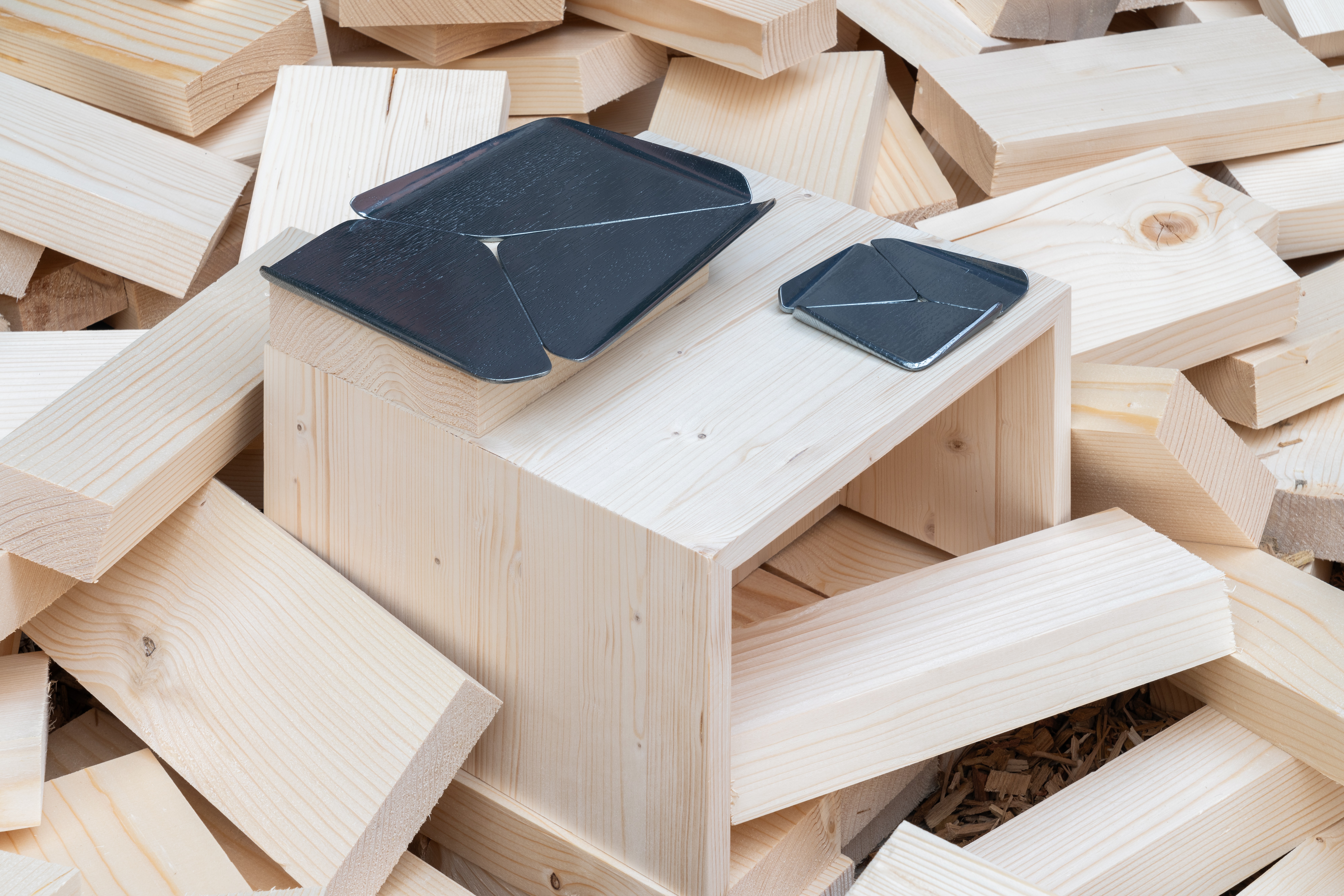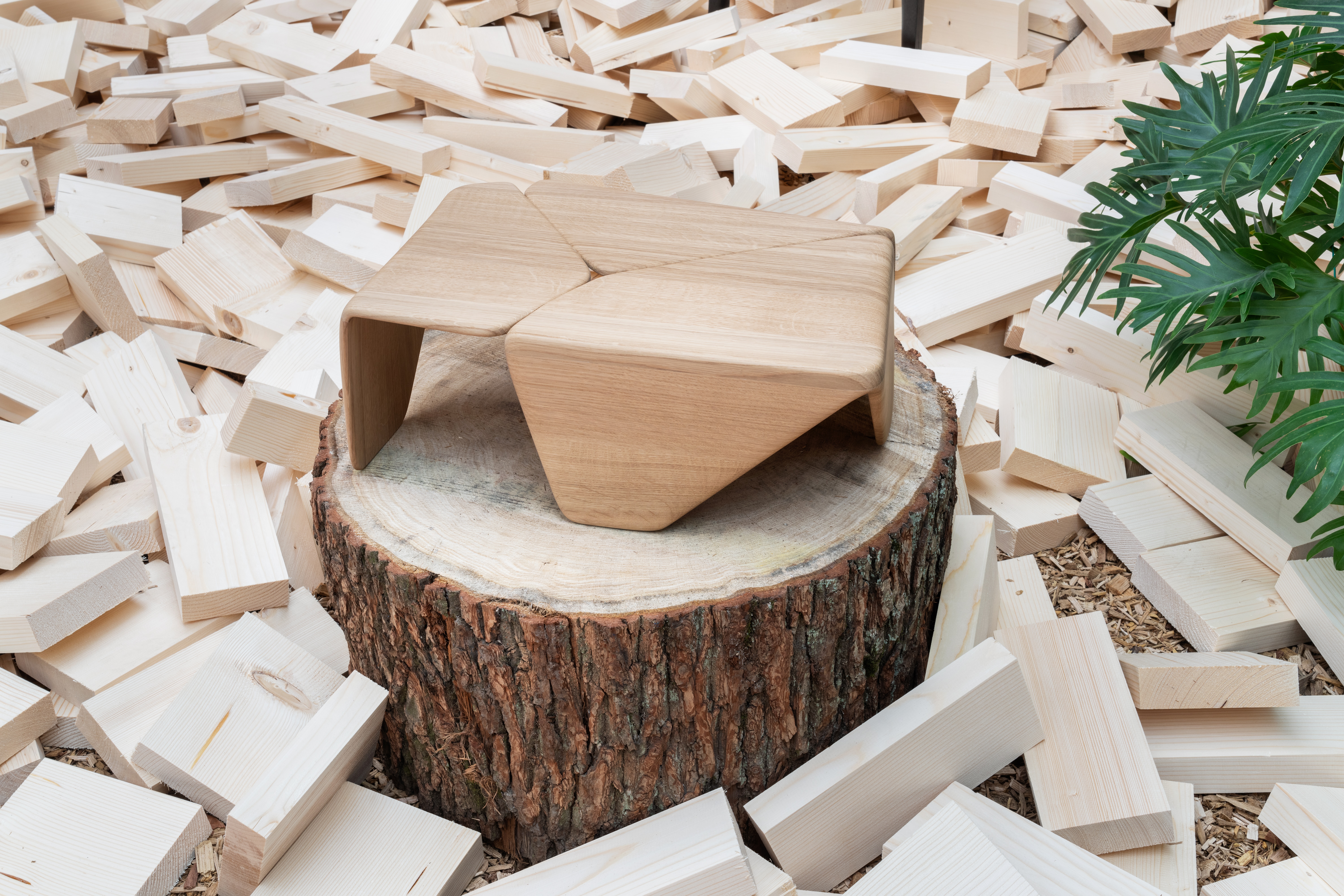Architizer is thrilled to announce that the 2026 A+Product Awards is open for submissions! The clock is ticking — get your products in front of the AEC industry’s most renowned designers by submitting today.
Zaha Hadid Design’s collaboration with Japanese furniture manufacturer Karimoku marks a beautiful fusion of craftsmanship, technology and bold design vision. In the Seyun Collection, Lead Designer Johanna Huang explains, that the partnership aimed to marry the fluid, signature aesthetics of Zaha Hadid with Karimoku’s expertise in wood and sustainable design. A Jury Winner for Residential Furniture in last season’s A+Product Awards, the project combines digital tools with centuries-old craftsmanship to create furniture that feels both timeless and progressive.
Follow in the footsteps of Zaha Hadid Design by entering your brand’s products for global recognition this year:
The Seyun Collection, characterized by its convergence of sculptural forms and functional elegance, represents more than just furniture. Huang emphasizes that the modularity of the tables, the fluidity of the chairs, and the seamlessness of the entire collection are results of thoughtful engineering, meticulous craftsmanship, and a commitment to precision.
In this Q&A, Huang shares insights into the creative and technical journey behind Seyun, illustrating how Zaha Hadid Design and Karimoku pushed the boundaries of furniture design while maintaining a deep respect for craftsmanship.

Seyun Collection, Photography by Masaaki Inoue, Bouillon
How did the Seyun collection come about? How did the collaboration with the manufacturer start?
The relationship between our two companies started a long time ago with some of our colleagues who knew people from Karimoku, and they felt our values aligned. That’s how the collaboration began — our companies were introduced and things developed from there.
Could you talk about the design process between Zaha Hadid Design and Karimoku? What was that like during the pandemic?
The project took off at the beginning of the pandemic, so we were in lockdown and met frequently over a long period of time. That constant interaction built a strong connection between the two teams, and we became fond of both the collaboration and the collection itself. It was a very intimate collaboration. We developed the project together, agreed on who the collection was for, and decided to reflect Zaha Hadid’s formal language while making the pieces suitable for mass production.
One of the key challenges was maintaining structural integrity with separate pieces while achieving a seamless, elegant look. The craftsmanship and ingenuity of Karimoku were instrumental in overcoming those challenges and making the final pieces appear effortless.


Seyun Collection, Photography by Masaaki Inoue, Bouillon
Where did the initial inspiration for the Seyun collection come from, and the idea of multiple pieces coming together?
Initially, we approached it from a formal perspective, focusing on the convergence of different tectonics. We explored patterns and forms that would arise from those studies. Interestingly, Karimoku named the collection — they saw our explorations and felt they resembled the cosmos. For instance, Seiun is a play on a Japanese word meaning “nebula.” So, it became a blend of our design thinking with their cultural perspective.
Could you talk about the modular aspect, particularly with the tables?
The modularity of the tables is a detail that can be overlooked, but it’s an essential feature. At Zaha Hadid, we always look at modularity beyond just simple forms. For the tables, we wanted to create a design where rotating the table could result in various different table configurations. It’s about creating multiplicity using patterns and plan, which is part of a recursive theme in our work.

Seyun Collection, Photography by Masaaki Inoue, Bouillon
The material — wood — feels both solid and light in the collection. Could you elaborate on that contrast?
Wood is indeed solid, but lightness and fluidity are key elements in our designs. It ties back to our architectural background, where we often lift structures off the ground to create space and motion, making things appear as though they’re floating. For the Seyun collection, we worked closely with Karimoku to find the balance between maintaining the structural integrity of the wood while creating that sense of lightness.
The collection started with the chairs, which we knew would interact closely with the human body. So, roundness and softness were important. When we extended the collection, we took those distinctive elements — like the rounded corners — and applied them to other pieces, ensuring continuity across the design.
Karimoku values sustainability. Did that influence the Seyun collection?
Yes, sustainability is a shared value between our two brands. For us, sustainability also means longevity and durability. We’re focused on creating high-quality pieces that stand the test of time and can be passed down through generations. Karimoku, being a four-generation family-owned business, understands this mindset deeply. They’re also very careful about sourcing high-quality wood to ensure endurance.


The Seyun Collection Milan 2024, Photography by DSL Studio
How was the Seyun collection manufactured, and what role did digital tools play in the design?
At Zaha Hadid Design we use digital tools exclusively, from concept to fabrication. Karimoku’s ability to work with file-to-factory technology was crucial because we strive for precision. They also have a state-of-the-art digital program to analyze the structural integrity of our designs. They would test our 3D models in their program and then create prototypes to ensure everything was safe and met high standards.
How do you hope users will experience the Seyun collection? What are your aspirations for how people interact with the pieces?
We hope people find joy in using these beautiful pieces. Our aspiration is for the collection to be timeless, relevant for years to come, and something people would want to keep and use over time. And there’s more to come! Besides the table and chairs, we have a few more items coming to market by the end of this year and early next year. We’ve extended the concept to include bar stools and smaller accessories, like trays, to complement the collection.
Architizer is thrilled to announce that the 2026 A+Product Awards is open for submissions! The clock is ticking — get your products in front of the AEC industry’s most renowned designers by submitting today.




